ATSC 113 Weather for Sailing, Flying & Snow Sports
Beaufort Wind Force Scale
Learning Goal 8e: Explain the change in wind speeds and sea state
as you move along the Beaufort Wind Force Scale, and which Beaufort-force values are best for recreational sailing.
The Beaufort wind force scale was
developed in 1805 by British Naval admiral Francis Beaufort. His system
to estimate and report wind speeds was based on the amount of canvas
sail that a full-rigged frigate (a large military sailing ship) could
carry. The scale ranges from 0-12, with 12 being for the strongest
winds. In the table below, we apply this scale to small sailboats
(dinghies).
[Definition: A dinghy is a small open-cockpit sailboat, typically 2 to 6 m long, used for recreation.]
In the "Extra Info" box at the end of this web page is a video
demonstrating the effects of different wind speeds to structures and trees on
land near the coast. Also in that info box is the original description of winds on large frigates.
| Beaufort Force | Wind (Knots) |
Description | Dinghy Sailing | Image |
| 0 | < 1 | Calm. Sea surface smooth and mirror-like. | Cannot sail due to absence of wind | 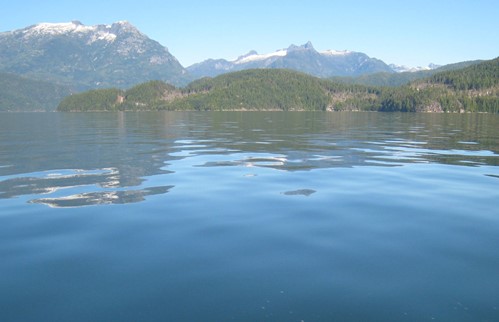 |
| 1 | 1-3 | Light air. Scaly ripples, no foam crests | Very slow, barely sailing | 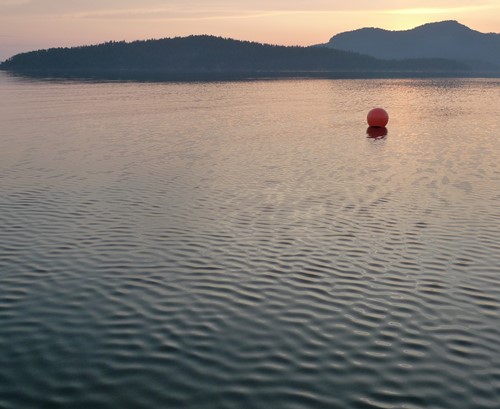 |
| 2 | 4-6 | Light breeze. Small wavelets, no breaking waves | Slow sailing | 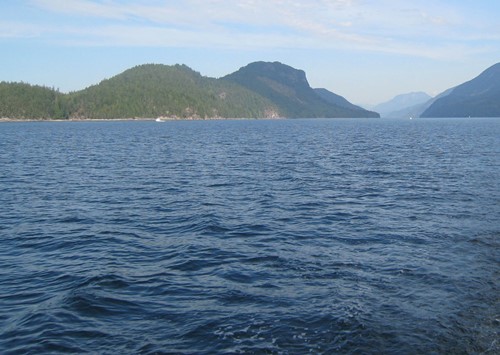 |
| 3 | 7-10 | Gentle breeze. Large wavelets, crests begin to break, scattered whitecaps | Good dinghy sailing | 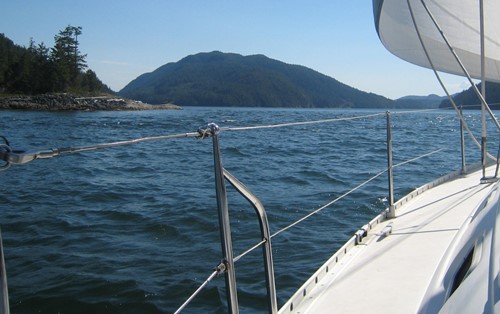 |
| 4 | 11-16 | Moderate breeze. Small waves (1-4 ft) becoming longer, numerous whitecaps | Good dinghy sailing, most dinghies will get up on plane, good for larger sailing boats | 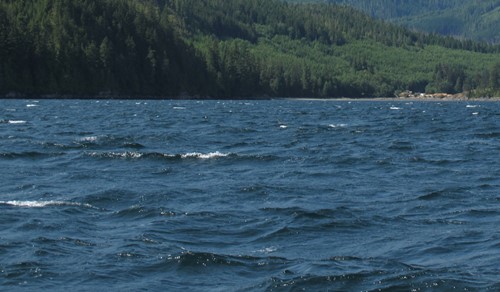 |
| 5 | 17-21 | Fresh breeze. Moderate waves (4-8 ft) taking longer form, many whitecaps, some spray | Advanced dinghy sailing. Have to be careful of gusts. Good for larger sailing boats | 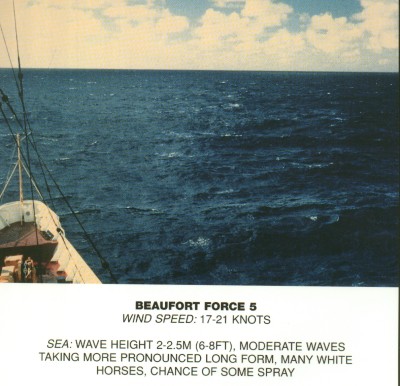
Source: Public Domain, https://commons.wikimedia.org/w/index.php?curid=2557081 |
| 6 | 22-27 | Strong breeze. Larger waves (8-13 ft), whitecaps common, more spray | Advanced dinghy sailing, advanced sailing, sail with reefed main sail and small jib | 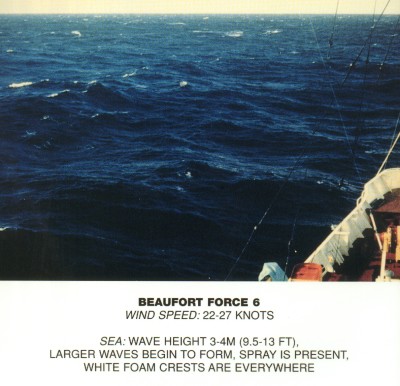
Source: Public Domain, https://commons.wikimedia.org/w/index.php?curid=2557083 |
| 7 | 28-33 | Near gale. Sea heaps up, large waves (13-19 ft), white foam streaks off breakers | Not suitable for dinghies. Advanced sailing, difficult | 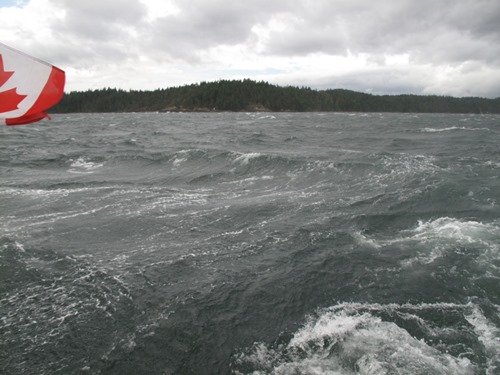 |
| 8 | 34-40 | Gale. Moderately high waves (18-25 ft) of greater length, foam blown in streaks | Very difficult to sail, head to safe haven immediately | 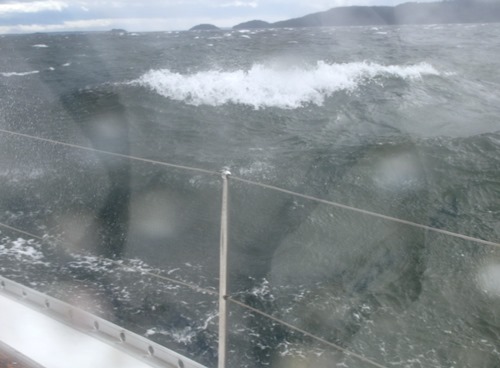 |
| 9 | 41-47 | Strong gale. High waves (23-32 ft), sea begins to roll, dense streaks of foam, spray may reduce visibility | Dangerous, take refuge, take all safety measures | 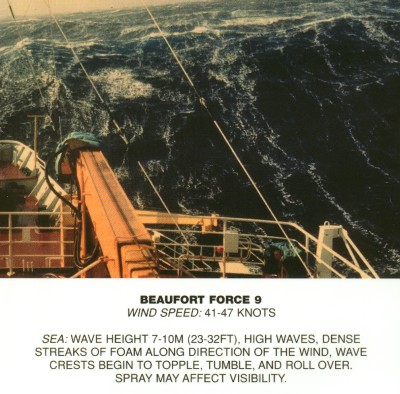
Source: Public Domain, https://commons.wikimedia.org/w/index.php?curid=2557088 |
| 10 | 48-55 | Storm. Very high waves (29-41 ft) with overhanging crests, sea white with densely blown foam, heavy rolling, lowered visibility | Extremely dangerous, inform the authorities if you are on the water unable to make it to safe haven | 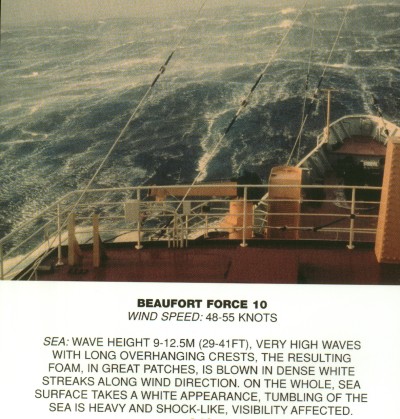
Source: Public Domain, https://commons.wikimedia.org/w/index.php?curid=2557090 |
|
11 |
56-63 | Violent storm. Exceptionally high (37-52 ft) waves, foam patches cover sea, visibility more reduced | Extremely dangerous, inform authorities, survival mode | 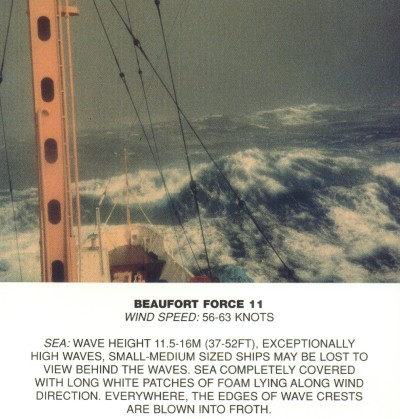
Source: Public Domain, https://commons.wikimedia.org/w/index.php?curid=2557093 |
| 12 | 64+ | Hurricane. Air filled with foam, waves over 45 ft, sea completely white with driving spray, visibility greatly reduced | Extremely dangerous, inform authorities, survival mode. Even at anchor or in harbour, boat should be abandoned, look for hurricane shelters | 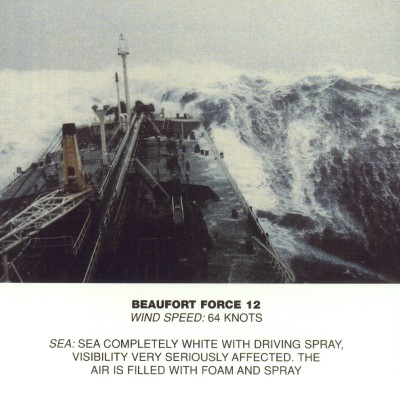
Source: United States National Weather Service
- http://www.crh.noaa.gov/mkx/marinefcst.php |
Extra Info, including Videos: (non-required material)
- Beaufort Scale: https://www.youtube.com/watch?v=WwDNWm6IEVw
- Big waves: https://www.youtube.com/watch?v=Le-tHm3OLMo
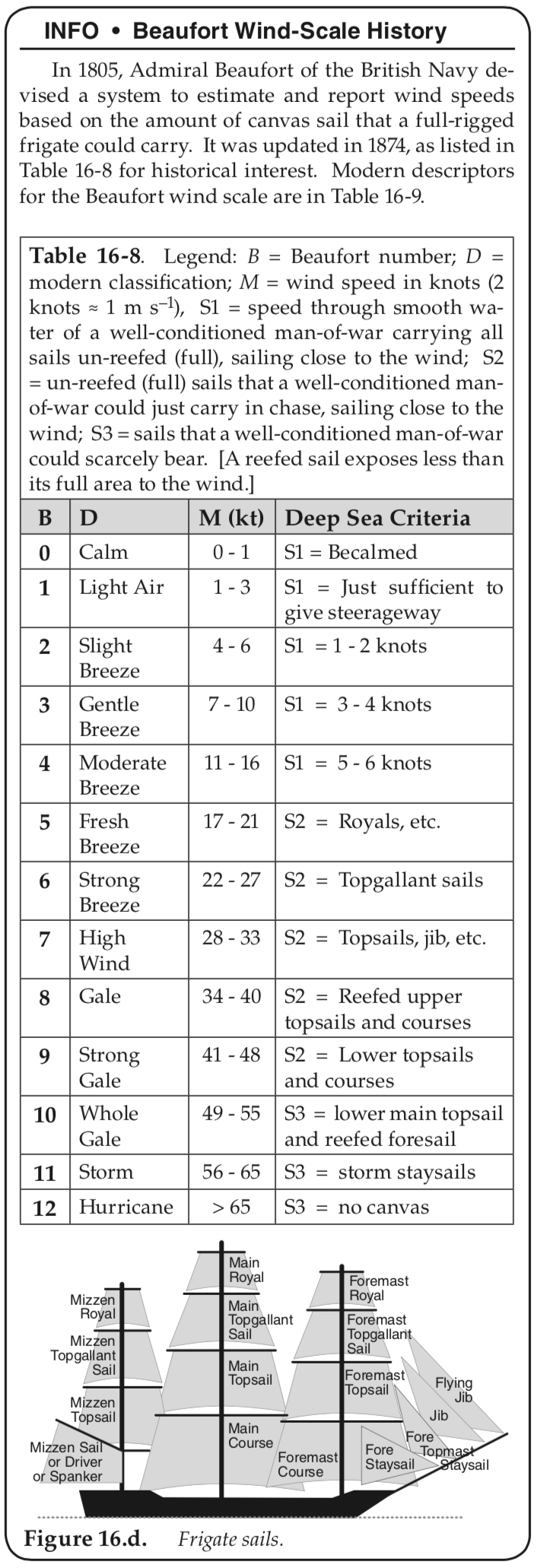
from Stull 2017 "Practical Meteorology", used with permission.
https://www.eoas.ubc.ca/books/Practical_Meteorology/
Keywords: Beaufort wind force scale, dinghy
Image credits: Government sources for the tables above are indicated in or near the table captions, and in the Extra Info box.